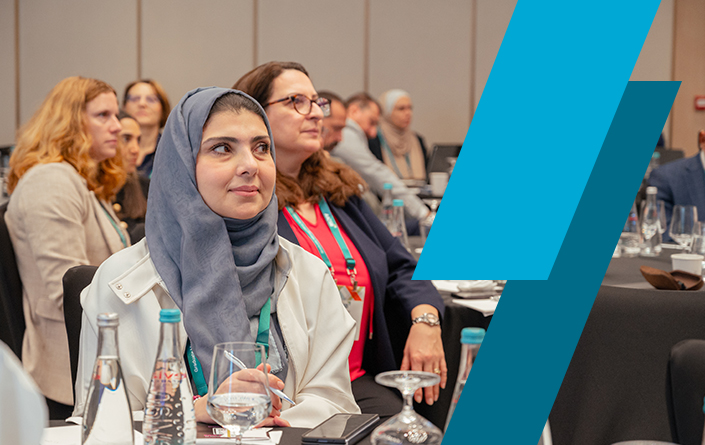Business Schools Plan for the Future
- COVID accelerated many trends on campus, including digital delivery, collaboration across disciplines, and an emphasis on societal impact.
- The University of Exeter is integrating climate science into the classroom, while Grenoble Ecole de Management has earned the status of Société à Mission.
- The Sasin School of Management has added more blended learning options, while ESSCA is focusing on making changes that meet the diverse needs of stakeholders.
“It’s tough to make predictions, especially about the future.” That quote is variously attributed to either physicist Niels Bohr or baseball player Yogi Berra, but it’s true. When people claim they can foretell the future, a heavy dose of skepticism is the right response. After all, who would have believed a prediction that the world would effectively shut down for several months because of COVID-19?
And yet, business educators must attempt to forecast the future, so they know how to prepare the next generation of leaders. Today’s business schools are confronted with a host of issues that are impacting the business world, including sustainability, geopolitical instability, and the Great Resignation. Schools also are grappling with how to provide online education, create lifelong learning opportunities for students, and ensure the mental well-being of staff and students.
It is difficult to predict how these issues and many more will reshape management education. In a 2021 interview with LinkedIn for a report about the future of lifelong learning and executive education, one dean noted that it was impossible to know in advance what was going to happen, “so let’s start running some experiments.”
Perhaps the best way to tackle uncertainty is to embrace it and just start experimenting with new approaches. For business schools, the mantra of the serial entrepreneur may be the best way forward: Be prepared to fail—but fail fast, learn, and go again.
This isn’t a mantra that business schools easily adopt. In the same project with LinkedIn, an employer noted that contemporary business schools too often cling to product-centered approaches—to draw an example from the music industry, they continue to sell vinyl LPs when they should be offering a service like Spotify. Business schools also focus too narrowly on traditional disciplines such as finance, accounting, and marketing when they should draw from computer science, ethics, and the arts and humanities.
If business school administrators are struggling to determine how to revamp their programs, they should pay attention to the way students are consuming education. Sheryl Sandberg, former COO of Facebook, once commented, “If you want to know what people like us will do tomorrow, you look at what teenagers are doing today.”
Take my daughter, who recently turned 18. She spent the pandemic learning online, both formally and informally. In addition to completing schoolwork, she used a language app to teach herself Welsh. To help her decide where to go to university, she is attending open online days hosted by institutions in the United Kingdom and farther afield. She wants to be on campus while she pursues her undergraduate degree, but she expects that her classes will have an element of digital delivery. She also expects to learn in more than one place, whether that’s physically or online.
But students like my daughter are only one audience that universities need to serve. Today’s learners could be anywhere from 18 to 80 years old as a growing number of older workers seek to update and add skills. How can universities appeal not only to first-time students, but also to repeat learners? How can they turn out graduates who meet the changing needs of business? What kinds of experiments should they be running?
Here, four business schools describe the tactics they’re using to attract today’s students and meet the needs of tomorrow’s businesses. Their strategies include emphasizing digital delivery, creating new content, and collaborating with other institutions. Administrators at these schools note that many of their changes were sparked by how COVID affected the delivery of education. And all of them hope their efforts will generate wide societal impact across communities and around the world.
An Interdisciplinary Approach
The University of Exeter Business School in the U.K. is focusing on two key areas that will affect the future of business education: what is being taught and how learning is delivered.
In terms of the curriculum, the school is emphasizing interdisciplinary work, notes Alexandra Gerbasi, dean of the school. She says, “Working in an interdisciplinary way is vital if business schools are going to make a real difference. Business does not sit in isolation, and schools need to stop teaching it that way.”
In particular, the school is integrating climate science into business classes. “At Exeter, the business school is now part of the Faculty of Environment, Science and Economy,” says Gerbasi. “It allows us to collaborate both in teaching and research. To my mind, bringing science and business education together is the No. 1 priority for our sector.”
“So much of what students are looking for is flexibility and personalization. Smaller classes and breakouts and personalized learning paths are key.” — Alexandra Gerbasi, University of Exeter
The school is also changing how it delivers teaching and uses physical space—changes that were already underway before they were accelerated by COVID. “The traditional lecture is something we are evaluating,” she says. “So much of what students are looking for is flexibility and personalization. Smaller classes and breakouts and personalized learning paths are key.”
She acknowledges the practical implications. Administrators at the school are not only looking at how they “can redesign existing buildings to accompany different styles of teaching,” but also considering what new infrastructure the school needs, even down to office spaces “where faculty and professional staff adopt hybrid ways of working.” These changes will continue to impact how the school delivers education in the years to come.
A Mission of Societal Impact
Grenoble Ecole de Management in France is approaching the future by redefining itself. “We are the first grande école business school in France to adopt the status of Société à Mission,” says Julie Perrin-Halot, associate dean and director of quality, strategic planning and international development. Like a B-Corp organization, an institution with Société à Mission status focuses its purpose and all its operations “on making a positive difference within wider society and the environment.”
Perrin-Halot notes that the school made the change in response to the demands of students, alumni, and employers. “As awareness of environmental, societal, and economic challenges increases, external stakeholders are becoming more vocal in their expectations,” she says. “Business schools wishing to remain competitive—and, more important, to contribute—will have to keep pace with these challenges. Our changed status is recognition of that.”
She senses that the pandemic has altered the relationship that students have with their schools. The physical distance created by COVID restrictions has resulted in a loss of the identity and cohesiveness that students feel when they spend time within the walls of a school, she says.
“Distance learning has challenged the concept of attending one institution for a full program,” she adds. “In the future, we will increasingly see students moving around based on the classes they find attractive and asking for recognition of work done in other institutions toward a degree.”
Students’ desire for flexibility and their willingness to go to different providers has huge implications for program design and alumni relations, she says. At the same time, these factors also present “opportunities for new models of business education, such as increased collaboration between institutions.”
Blended and Focused on Sustainability
The Sasin School of Management in Bangkok, Thailand, is meeting the future by rethinking the way it delivers learning and by emphasizing topics that are highly relevant to today’s learners.
Some of those adjustments were kickstarted by the pandemic. “COVID changed our academic year,” says Ian Fenwick, dean of the school. “In 2020, we moved our traditional starting date from late April to August 1st. This has now become permanent.”
The school also has incorporated some of the lessons it learned about virtual learning during the lockdown. As an example, says Fenwick, “we are launching a professional certificate taught by blended learning, and we have an entire blended learning program on the horizon.”
This means the school has adapted some of its on-campus classrooms for broader use. “Our physical spaces are vital to encourage group projects and learning,” says Fenwick. But these spaces also must allow the school to “merge remote and present participants and merge live and video content.”
“We create graduates who are in a ‘Why not me? Why not now?’ mold.” — Ian Fenwick, Sasin School of Management
Sasin is implementing additional changes as a way to serve its audiences and differentiate itself in the market. For instance, because today’s students, alumni, and employers are deeply concerned about sustainability, says Fenwick, the school is making that topic “an organic component of every business school course.”
To that end, the school is focusing its research on sustainability and entrepreneurship in Southeast Asia. Says Fenwick, “We create graduates who are in a ‘Why not me? Why not now?’ mold.”
At the same time, the school is taking a different approach to how it deploys faculty. According to Fenwick, “We have always used visiting faculty for about 60 percent of our teaching. But we are also building regional expertise in our full-time, core faculty. This allows us to take global content and specialize it for this region.”
Driven by Stakeholder Needs
At ESSCA School of Management, which has campuses across France and abroad, administrators have noticed one big change sparked by COVID: a new attitude toward international mobility. As people develop a growing awareness of the carbon footprint of transportation, they begin “to challenge the cost/advantage equilibrium of being mobile,” says Benjamin Morisse, vice dean of the school.
A business school should offer alternatives that don’t require travel—but it also should find other ways to accommodate the preferences of its stakeholders, says Morisse. How? First, he emphasizes, it should design a business model that fits the fundamentals of its environment—such as its demographics, its access rate to higher education, and its ability to attract external funding.
Second, it should be driven by principles of risk management. That is, administrators should avoid certain risks but accept others that seem reasonable. Finally, he says, administrators should utilize data generated by the people whom the school targets, selects, enrolls, and graduates.
In addition to following those three steps, ESSCA is meeting stakeholder needs by building on its multi-campus model. The school presently has eight campuses (in Angers, Aix En Provence, Bordeaux, Lyon, Paris, Strasbourg, Budapest, and Shanghai), and two more are scheduled to open before 2024. On each campus, the school has multiple goals: to serve business communities, to foster student interactions with corporations, and to integrate the principles of the Sustainable Development Goals into everything from program design to research.
“Crucially, we don’t see innovation as incompatible with sustainability,” notes Morisse. “Rather, we assume sustainability will support innovation.”
Finally, the school is serving stakeholders by developing student competencies. Says Morisse, “We are focusing on transferable skills by developing multidisciplinary degrees—for instance, with law, engineering, or psychology.”
‘The Imaginative Business School’
As business schools look toward the future, they must weigh what changes to make—and wonder how deeply those changes will affect their programs and their operations. But the rise of digital delivery does not mean face-to-face learning is about to disappear. A growing emphasis on societal impact does not mean the world will no longer need accountants. Some traditional elements of business education will remain.
However, business schools need to adopt flexibility, personalization, collaboration, and new business models. What is most likely to succeed in the future is the imaginative business school.






